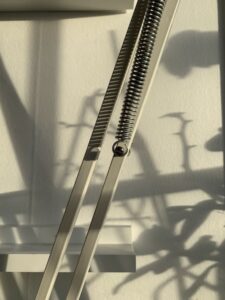 There are many different types of springs, used in countless devices, mechanisms, machines, tools, and much more. They are very much an indispensable component, each with their own design characteristics specific to the application. Springs are an elastic object which stores mechanical energy that releases when a force is applied to it. As a component, they are designed to either pull, push, wind, support, lift, or protect a device. Applied primarily in mechanical assemblies to provide types of mechanical force—compressive, tensile, or torsion—they are used to lift engine valves, hold a battery in place, retract a pen, operate a garage door, support a car frame, even a building, and so much more.
There are many different types of springs, used in countless devices, mechanisms, machines, tools, and much more. They are very much an indispensable component, each with their own design characteristics specific to the application. Springs are an elastic object which stores mechanical energy that releases when a force is applied to it. As a component, they are designed to either pull, push, wind, support, lift, or protect a device. Applied primarily in mechanical assemblies to provide types of mechanical force—compressive, tensile, or torsion—they are used to lift engine valves, hold a battery in place, retract a pen, operate a garage door, support a car frame, even a building, and so much more.
Springs are common applications in the making of parts and components for such industrial sectors as aerospace, automotive, construction, medical appliances and systems, electronics, agriculture, along with many other general manufacturing components. Spring material usually derives from spring steel or stainless steel and is commonly wound from wire.
Ordinary wire springs have a force of magnitude that increases linearly when a pulling, pushing or twisting force is exerted. The force that increases linearity in regard to the displacement distance is known as Hooke’s law of motion. In other words, when a component applies a force to a spring works by applying an equal and opposite force to the component. Hooke’s law explains the force a spring exerts on the component or object attached to it.
For applications, springs are customized to specification by using dedicated wire winding machines. By winding the wire through a given number of turns to a specific length, the machines provide the necessary force constant for the particular application.
There are many varieties of springs made, and each is dependent on the operational requirements of the application. That said, the overwhelming majority of springs manufactured, and the most popular types of springs used in industrial applications, are the compression spring, extension spring, and the torque spring.
Compression Springs
This is the most popular type of spring made. It gets its name from the compressive force it carries when loaded. Its mechanical energy is released when an opposing force, i.e., a load, is applied to it. Compression springs get shorter as the load gets heavier. The space between the coils closes until the compressed length has reached its maximum load.
These types of springs are found in many manufacturing applications—industrial equipment, pens and notebooks, precision instruments and tools, drilling equipment, mining equipment, electronics, automotive parts—that require variable and opposing force between components. End designs vary—they can be open or closed, where the last coil is squared or flattened against the adjacent coil via grinding the surface. Popular configurations of compression springs include the hourglass (conical), barrel (convex), and conical shapes.
Extension Springs
The extension spring, also referred to as the tension spring, releases its mechanical energy when a tension load is applied to it—the spring resists stretching when pulled. As the opposite of compression springs, extension spring coils touch at a rested position and become longer when force is applied. They feature a variety of hooks, loops and coil designs at either end. No matter the end configuration, the specific design is intended to attach two components to each other. Due to their inherent tensile strength, extension springs absorb and store energy, as well as create resistance to a pulling force. The components are found in carburetors, garage or commercial doors, trampolines, washing machines, farm machinery, and much more.
Torsion Springs
As the name suggests, torsion spring’s mechanical energy is derived through torque or rotary force. In other words, torsion springs must be wound; the end of the spring is rotated through an angle when a load is applied. As it is wound up, the diameter of the spring is reduced and its body lengthens. When released, it exerts a twist-like action that can close a screen door, clamp a clothespin, or snap a mousetrap. Torsion-bar suspensions are commonly used in many vehicle suspension systems—cars, trucks, and military vehicles. Custom design features single-bodied and double-bodied torsion springs with such end configurations as straight, offset or hinge—to meet the design requirement of the component.
If you’re unsure what type of springs you may need for your specific application contact us today – Our Sales Engineers are a valuable resource for helping you with product specifications and the manufacturing method that will assure the highest quality at the lowest cost.

